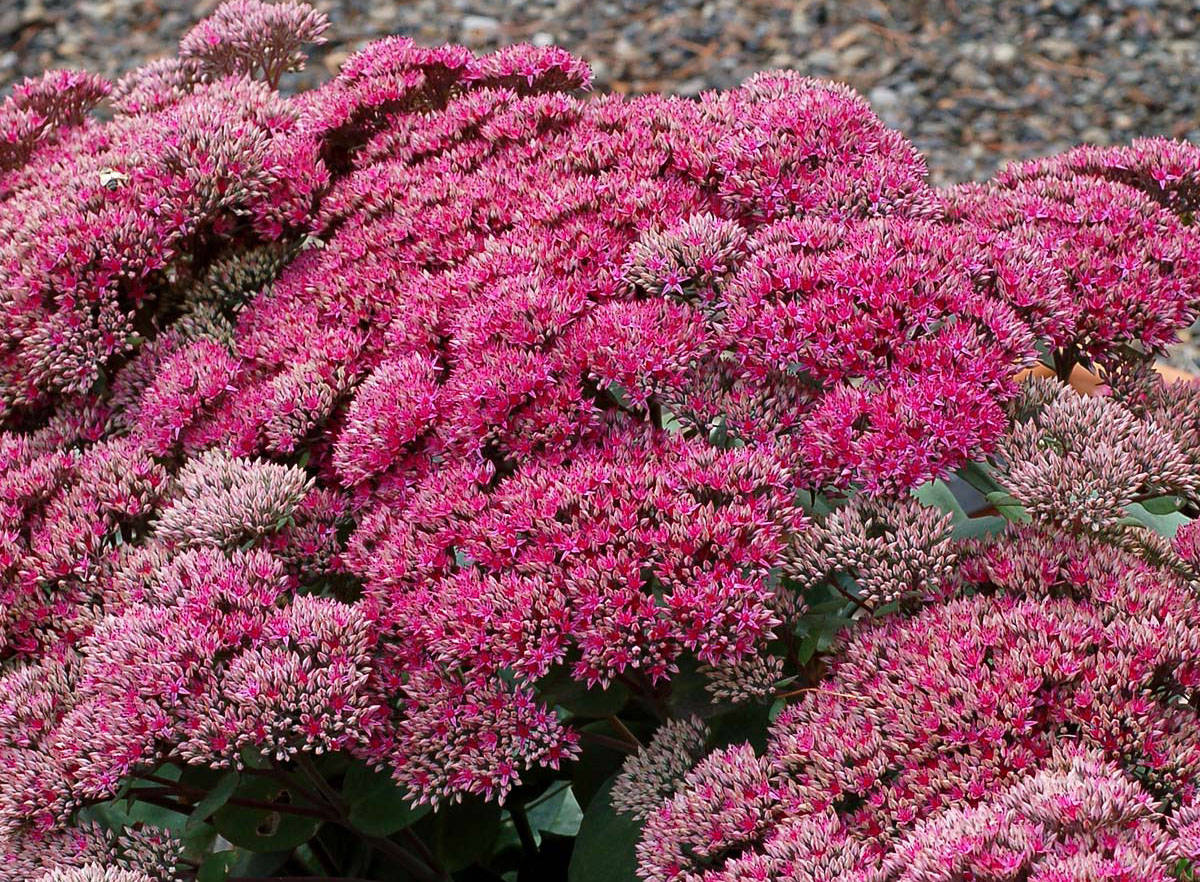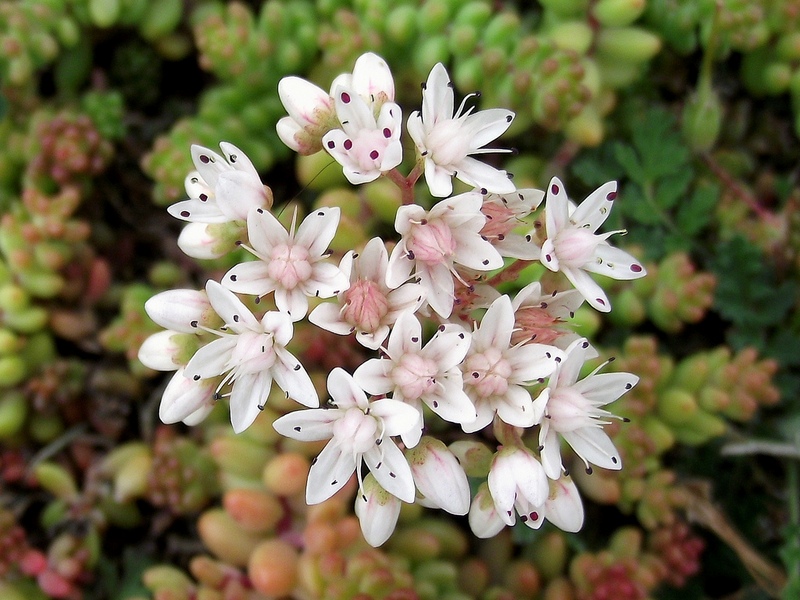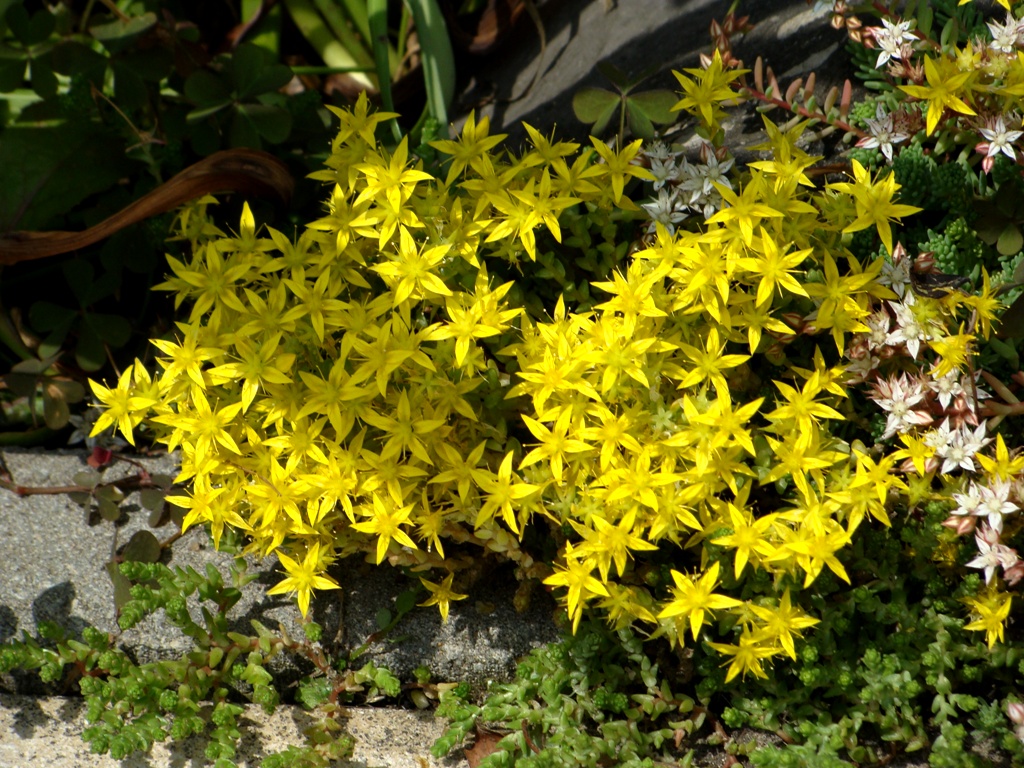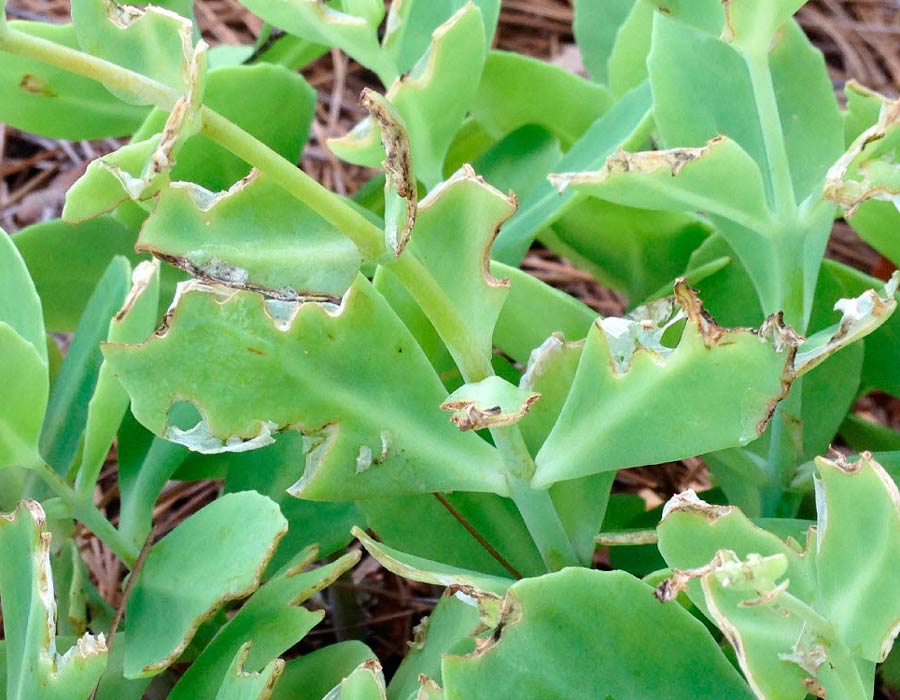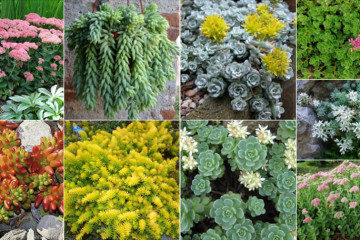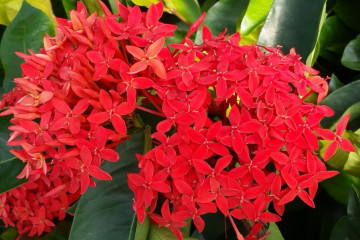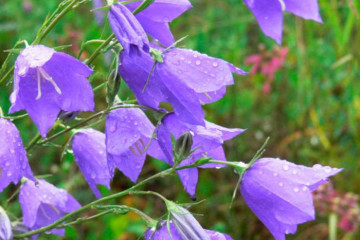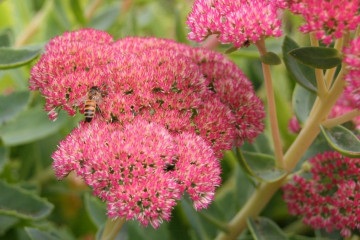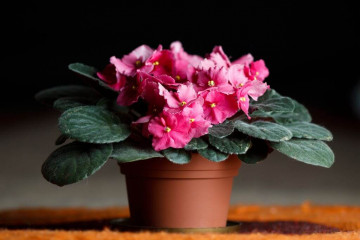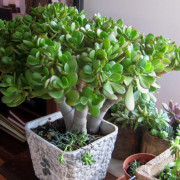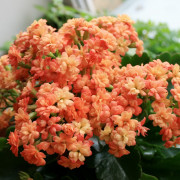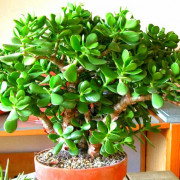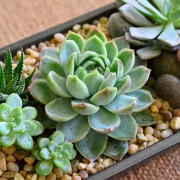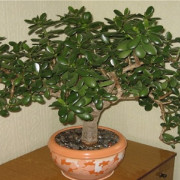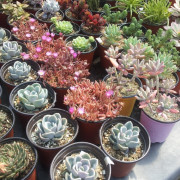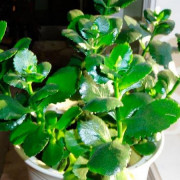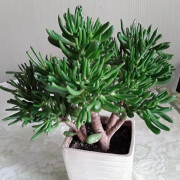Sedum (sedum) home - description of the plant
Content:
Sedum, or sedum (sedum) - a succulent plant and is popularly called "hernial" or "feverish" herb. The botanical term "sedum" is of Latin origin and means "to reduce, calm down, lighten." This is due to the healing properties of stonecrop, it can relieve various ailments.
Sedum (sedum) home - what kind of plant is it, family
The herbaceous perennial sedum sedum is a representative of the Tolstyankov family and grows in the form of shrubs, but ground cover varieties and semi-shrubs are often found.
A brief description of what stonecrop looks like
Fleshy oval leaves of the bush are arranged evenly and alternately on the stems. The plates can be either opposite or whorled. Their size and color are also varied, as well as the shape of the inflorescences.
Medicinal properties
Due to its healing properties, sedum is widely used in folk medicine and pharmaceuticals. Often at home, this herb is grown for the purpose of preparing tinctures and decoctions.
Medicinal properties of the sedum flower:
- normalizes blood pressure;
- fights colds;
- starts metabolism;
- reduces weight, as it is able to burn cholesterol;
- acts as a calming agent for nervous states.
Popular flower varieties
The plant has many species, and the first hybrid sedums began to appear at the beginning of the last century.
Sedum large (Sedum telephium)
The description of stonecrop is classic for the genus of these plants. The homeland of the shrub is Europe. This sedum has straight stems and small, light green, smooth oval leaves. A large subspecies grows up to 50 centimeters and blooms with red-pink flowers.
White sedum (Sedum album), or soap dish
Soap or white sedum is a creeping ground cover shrub that is grown to fill flower beds and flower beds. The plant tends to grow rapidly and change foliage several times per season. In the spring it is green, then it takes on a burgundy tint. It blooms with its former fluffy flowers from July to August.
Sedum acre
The caustic species is also called yellow sedum. Its characteristic feature is the unusually large for this genus of plants, flowers of a pale yellow color. Small leaves are teardrop-shaped, densely located on the stems and from a distance look like large convex scales.
False sedum (Sedum spurium)
False sedum has creeping shoots, reaching a length of up to 30 centimeters.The shrub has smooth, light green leaves that widen slightly at the outer edge. The inflorescences are composed of many small pink, star-shaped flowers.
Sedum prominent (Hylotelephium spectabile), or sedum prominent
The prominent sedum has a wide color palette of inflorescences, they can be yellow, purple, pink and white. A short bush of 40-50 centimeters has sprawling burgundy-brown shoots and glossy leaves of a rich green hue.
The subspecies has many interesting decorative varieties. Sedum Mix has more monochromatic shoots with foliage, and Winky sedum is distinguished by horizontal ground cover growth.
Sedum burrito
Sedum Burrito is one of the most beautiful decorative varieties that is in demand in indoor floriculture. It has elongated drooping shoots with small and dense teardrop-shaped leaves. Due to the shape of the bush, it is more often grown as an ampelous plant.
Planting and caring for sedum outdoors
Like other succulents, the flower does not differ in moodiness in growing. Sedum planting and care does not require much effort and time.
When disembarking, landing rules
The ideal time when sedum can be planted in open ground at home is spring. Over the entire growing season, the bush will have time to gain strength and get accustomed to new climatic conditions.
At the bottom of the pot, a drainage layer is first laid and only then a little substrate is added. Place a seedling or adult plant on top and cover with the remaining mixture.
Preparing the plant for winter
For the wintering period, the plant will need shelter. Some growers dig up the shrub and transplant it into a pot to keep it indoors in winter. Before covering the plant, sanitary pruning is carried out. After that, the soil is mulched and the trunk circle is covered with earth. Cover with foliage and spruce branches from above.
If the plant is grown in an apartment, for the winter it is transferred to a more shaded and cooler place. The ideal temperature during this period is 18-20 ℃. Watering and feeding should be reduced moderately so as not to disturb the sedum plant.
How to grow a flower at home, care features
Planting and caring for sedum outdoors is the same for all plant varieties and cultivars.
Illumination and temperature conditions
The shrub is undemanding to lighting, the main thing is not to plant it in too shaded areas. The sedum is resistant to high and low temperatures. The only thing that should not be allowed is sudden temperature jumps.
Watering rules and humidity
There is no need to water stonecrops in the open field, the plant does not like excessive moisture. Watering is required only during dry periods. And in room conditions, the bush will have to be moistened more often, especially in summer.
Top dressing and soil quality
It is enough to feed the bush once a month with organic or complex mineral fertilizers for succulents. Sedum sedum plants prefer fertile soil, especially if they belong to tall species and varieties. Nutritious loamy soil fertilized with organic matter is well suited: compost, humus, rotted manure.
An important criterion when choosing a soil is its good air permeability, since the plant does not like excessive moisture and is sick due to stagnant water in the soil.
Flowering period, when and how it happens
Beautiful, abundant and lush flowering differs from other herbaceous plants sedum, the species of which can have different shades and shapes of inflorescences.
The plant begins to bloom in early July. The flowering process lasts 2 months. Towards the end of August, the sedum fades completely. But in the southern regions, some varieties can bloom before the first frost. When stonecrop has completely faded, it is cut at the root and prepared for wintering.
Stonecrop propagation in the garden and at home
Sedum spurium is propagated in the same way, regardless of where the plant grows: in an apartment or in a garden. There are three popular and frequently used methods by which stonecrop can propagate: by seeds, by dividing a bush and by cuttings.
Sedum propagation by seeds is carried out in early spring. First, the planting material is soaked in a disinfecting solution, and then dried. A seed is planted in a box with a nutrient substrate at a distance of 2-4 cm. After that, the earth is moistened with a spray bottle and the container is covered with cellophane.
It is best to divide the bush when transplanting into a new container. To facilitate the task, it is first watered for a couple of days, after which it is taken out of the pot and the old soil is partially removed. It is better to divide an adult bush into 2-3 equal parts, each of which is then planted in separate containers.
How to transplant
Transplanting seedlings and adult plants can be done at any time, but growers usually do this in the spring. Prepare a nutritious soil mixture in advance. Purchase a ready-made mixture especially for succulents or do it yourself. To do this, take loose soil and mix it with sand and any organic fertilizer.
Growing problems, diseases and pests
The plant is highly resistant to diseases, but with excessive watering it still suffers from growing problems. With increased dryness of the air, pests often appear on the leaves and stems.
Among insect pests, the scale insects, aphids, thrips, caterpillars and sawflies are especially problematic. A sign of their appearance is the stop of the flower in development. Insects love to eat fleshy leaves and suck juices out of them. Treat sedum with insecticides.
Beautiful sedum is famous for its wide variety of species and varieties. It is easy to look after them, because they do not like excessive attention. It is necessary to prepare in advance a place for keeping and create the necessary climatic conditions.
